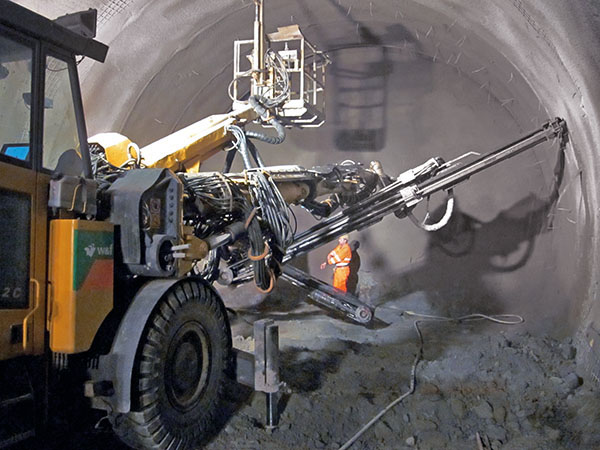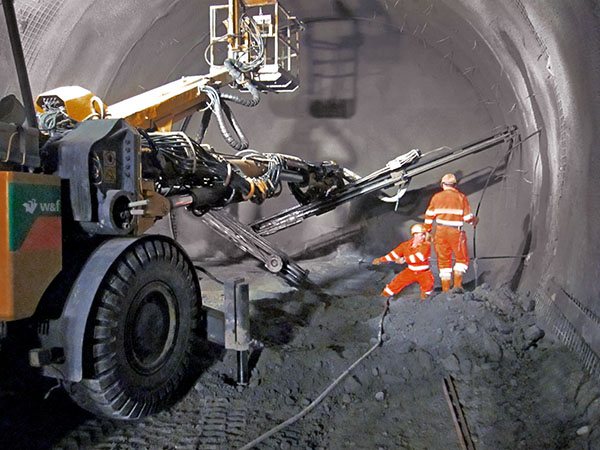

ALWAG Systems Stabilize Austria’s longest Railway Tunnel
The Koralm Tunnel is the most important part of the Koralm Railway running from Graz to Klagenfurt in Austria. The construction of the new high-speed line will significantly increase transportation capacity in Austria and will shorten travel time between Graz and Klagenfurt from three to one hour.
With a total length of approx. 32.8km, the tunnel will be the longest railway tunnel in Austria and one of the longest traffic tunnels in the world after its completion. Two and a half km of the tunnel’s 20km long main section are being constructed as two single rail tunnels using the New Austrian Tunneling Method (NATM). The remaining section is excavated using TBMs. The tunnel will have a maximum overlay of approx. 1,200m. The tunnel tubes have an axis-center distance of approx. 40m, an interior radius of 3.95m and a breakout area of approx. 82m² each. In order to carry out an in-depth analysis of the geological and hydrogeological conditions as the basis for the main excavation, approx. 130 exploration wells as well as a 10km long exploratory tunnel system were excavated in advance. DSI had previously participated at the construction of the Paierdorf Exploratory Tunnel, which will be used as an air shaft after completion of the Koralm Tunnel. DSI is supplying specialized tunneling systems for section KAT I, the first, approx. 5.5km section in the east. The double tracked section is being built as a double tube, 1,961m long shotcreted tunnel using a combination of blasting and excavation. The prevailing ground is characterized by sediments consisting of unconsolidated rock, sand and silt with underlying layers consisting of unconsolidated silt and sandstone. DSI supplied the following products for stabilizing the excavation:
Lattice Girders PS50/20/30, PS70/20/30 and PS95/26/34
SN Anchors, 250kN, ∅ 25mm
DSI Hollow Bars R32, 250kN, R32, 280kN, R38, 500kN and R51, 550kN
AT – Power Set Self-drilling Tube Spiles, 52 ∅ x 4.5mm
Steel Spiles, ∅ 26 and 36mm.
Construction of section KAT I started at the end of 2008 and is scheduled for completion in July 2013.
